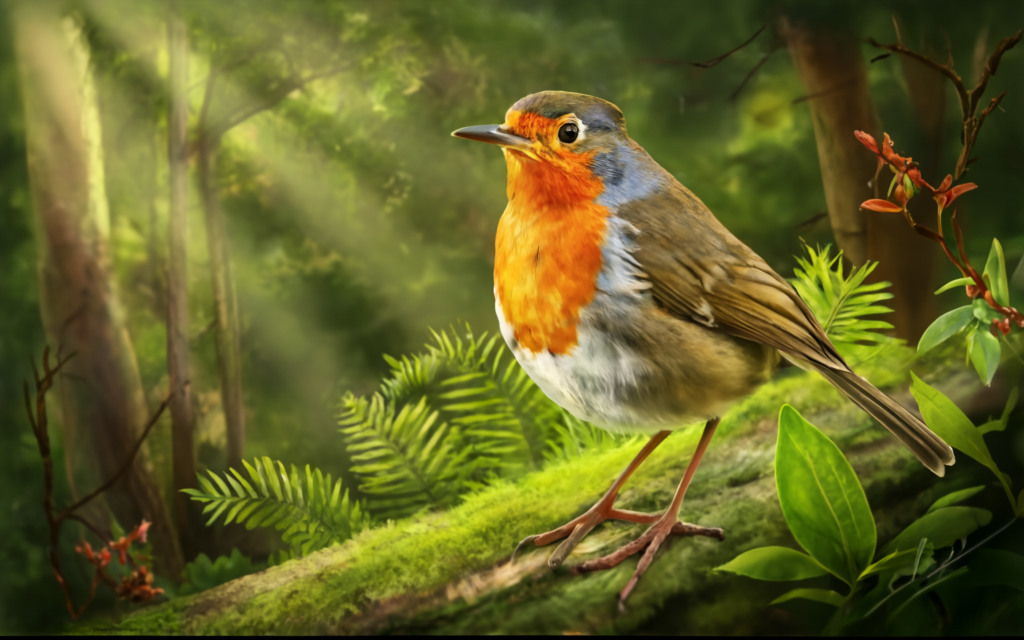What is an adaptation for an American robin bird? Animals with adaptations have unique characteristics that help them thrive in their surroundings. . The American robin, a familiar bird often seen in gardens and parks, has several amazing adaptations that help it thrive in different conditions.
One of the most important adaptations for the American robin is its sharp beak, which helps it catch and eat worms, insects, and berries. Robins also have strong legs and feet that allow them to hop and search for food on the ground. These features make them well-suited for finding food and staying safe in various environments.
What is an Adaptation for an American Robin Bird? Key Features for Survival
One of the most prevalent birds in North America is the American robin. So, what is an adaptation for an American robin bird that helps it survive? One of the key adaptations is its sharp, pointed beak. This beak is perfect for catching worms, insects, and berries, which make up the robin’s diet. Thanks to this special feature, the robin can easily find food, even in different environments like gardens and fields.
Another important adaptation is the robin’s strong legs and feet. These help it hop along the ground while looking for food. The robin can easily move through grass and dirt to spot worms. Its ability to hop also helps the bird stay alert to any danger, allowing it to move quickly if needed.
What Makes the Robin’s Migration an Important Adaptation

Migration is another big adaptation for the American robin. Every year, robins travel long distances to find warmer places when winter comes. This is a smart survival strategy since it helps the robin find food and avoid cold weather,
Not only do robins migrate to stay warm, but they also migrate to find the right food sources. In the colder months, insects and berries are harder to find, so traveling south allows robins to have access to these foods in abundance. This adaptation is a key reason why robins thrive across different parts of the continent.
How the Robin’s Nesting Habits Are an Adaptation for Safety
The American robin’s nesting habits are also a great example of its survival skills. When building nests, robins use a mix of twigs, grass, mud, and feathers. This combination helps make the nest strong and secure. The soft materials inside the nest provide warmth and comfort, which is important for keeping the eggs and young birds safe.
Robins are very careful about where they build their nests. They often choose trees, bushes, or even buildings that are far enough from predators. This is another way the robin’s nesting behavior helps it survive. By building in safe, hidden spots, robins give their young the best chance to grow and develop in peace.
The Role of Feathers in Keeping the American Robin Safe and Warm

Feathers are one of the American robin’s most important adaptations. In order to keep warm air near their bodies during chilly weather, robins fluff up their feathers. This helps keep them warm even when the temperature drops. Feathers also provide protection from rain and snow, making it easier for robins to survive tough weather conditions.
In summer, the robin’s feathers help it stay cool. By spreading out its feathers, the robin can stay comfortable and avoid overheating. These feathers are not only beautiful but also essential for survival. Whether it’s staying warm in winter or cool in summer, the robin’s feathers are a big part of what makes it adaptable to different environments.
Conclusion
In conclusion, the American robin is a smart bird with many helpful adaptations. From its sharp beak for catching food to its strong legs for hopping, each adaptation makes the robin better suited to survive. Its ability to migrate and choose safe places to nest also helps the bird thrive in changing seasons.
These unique adaptations allow the American robin to live in many different places and survive through tough weather. So, the next time you see a robin, remember all the clever ways it has adapted to the world around it.
FAQ
Q: What is an adaptation for an American robin bird
A: An adaptation for an American robin bird is its sharp beak, which helps it catch food like worms and insects.
Q: Why do robins migrate
A: Robins migrate to find warmer weather and more food during the cold winter months.
Q: How does the robin’s nest help its survival
A: The robin’s nest is built with strong materials like twigs and mud, keeping eggs safe and warm.
Q: How do robins stay warm in winter
A: Robins fluff up their feathers to trap warm air and stay warm in cold weather.
Q: What do robins eat
A: Robins eat worms, insects, and berries, which they find with their sharp beaks.


